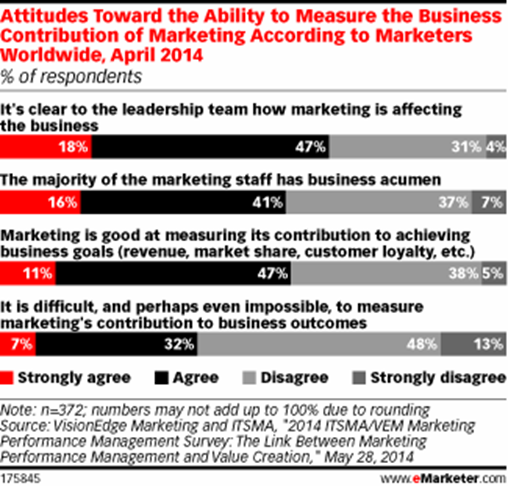The heat is on when it comes to measuring and analyzing marketing data for strategic decision making
- Category: July 2014 - Marketing Analytics
 The purpose of data evaluation is to identify customers’ behavior and reactions to marketing campaigns in order to grow sales revenues. Business Intelligence helps here to obtain the necessary information to customers and the market, as well as to understand, analyze and evaluate the data to optimize decision-making processes and to develop a competitive advantage from the data analysis. Meaningful trends can be identified and cause-effect relationships determined to maximize the value of operational-strategic actions that ultimately optimize business success.
The purpose of data evaluation is to identify customers’ behavior and reactions to marketing campaigns in order to grow sales revenues. Business Intelligence helps here to obtain the necessary information to customers and the market, as well as to understand, analyze and evaluate the data to optimize decision-making processes and to develop a competitive advantage from the data analysis. Meaningful trends can be identified and cause-effect relationships determined to maximize the value of operational-strategic actions that ultimately optimize business success.
Business Intelligence for digital direct marketing optimization
The most challenging part is generally the development of carefully planned marketing campaigns which imply that customized strategies are in place to increase sales and customer satisfaction.
First step is the determination and measurement of key performance indicators (KPI), before defining the clusters/segments that are meaningful for purchases and email interactions. Only then does it make sense to continue with the elaboration of appropriate email marketing strategies for each cluster, which ultimately serve as a marketing tool that can (a) contribute to changes in corporate sales (up-sell and cross-sell), (b) optimize the product mix sold to each customer (maximizing the bandwidth), and last but not least of course, (c) lead to demonstrable increase in customer satisfaction.
Accordingly, the results of a study conducted by VisionEdge Marketing and ITSMA (April 2014) revealed that 85% of marketers worldwide said the pressure to measure marketing’s business value and contribution had increased. Just 14% said the level of pressure had stayed the same, and 1% thought it had decreased.
Besides these facts, the study found that marketers worldwide felt they were doing a good job at proving their effect on business to their leadership teams, with nearly two-thirds agreeing or strongly agreeing with this statement.

From marketing data analysis to sales strategy
To better understand, for instance, how data analysis can contribute to the optimization of email marketing activities, it can be useful to analyse practical examples of major international luxury fashion companies, all of which are active worldwide and are running in the background sophisticated email marketing systems: on an average one email per week is sent to each customer, whereby the communication with the customer is more or less personally well suited to each individual. In fact, for each individual campaign, analysis to determine the influence of just this campaign on purchase transactions there performed.
To obtain a meaningful view of data in these cases, usually both e-commerce and in-store purchases are taken into account over a period of seven days after opening the email (influence window). In the luxury segment, this influence extends from seven to ten days for online purchases and to twenty to thirty days for in-store purchases. Anyway, results show that more than 50 percent of all offline purchases are made within seven days after opening the email.
Incredible sales figures and an amazing success story we can learn from.
By Daniela La Marca


